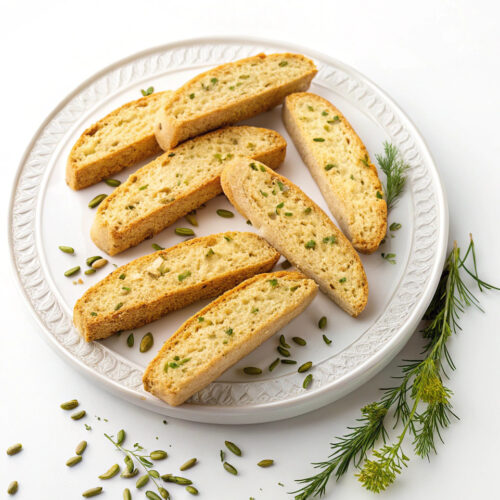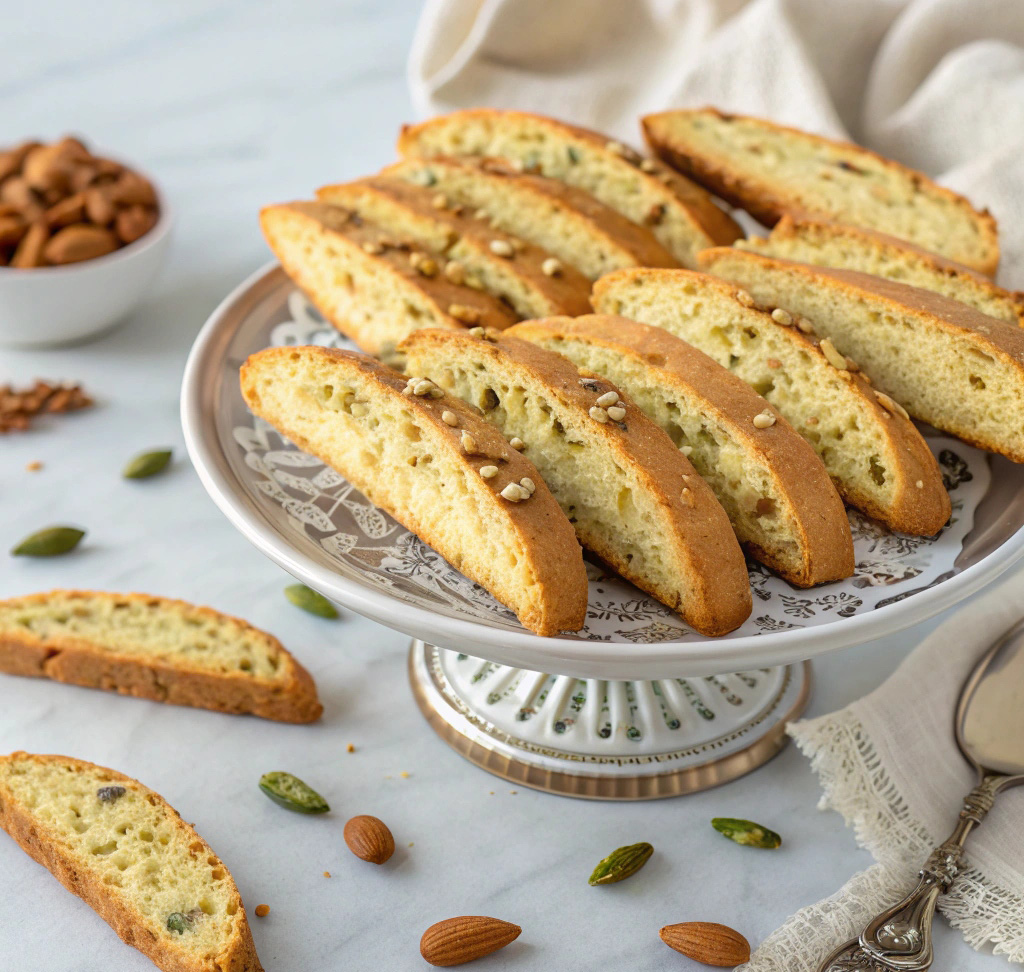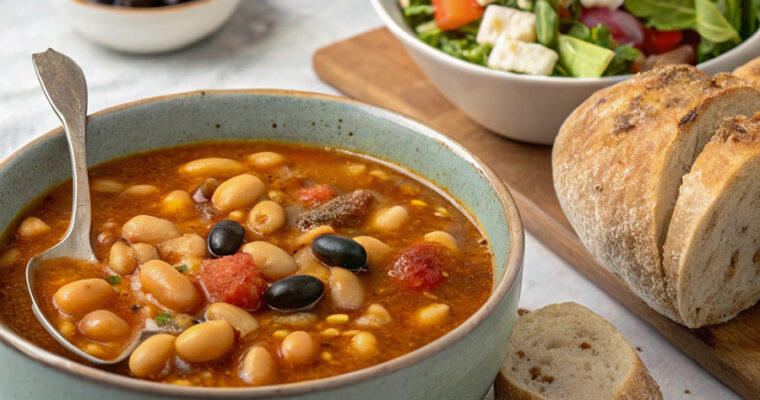Biscotti are a beloved treat in Italian cuisine, known for their crisp texture and delightful flavors. Among the many variations of this classic, Biscotti with Fennel Seeds stands out for its aromatic and subtly sweet flavor. This version is perfect for those who enjoy the mild, licorice-like taste of fennel, making it an ideal pairing for coffee or dessert wine.
A Little History Behind Biscotti
The word “biscotti” comes from the Latin words “bis” (twice) and “coctus” (cooked). Bakers in Tuscany began making biscotti in the 14th century to preserve bread for long voyages. They baked the cookies twice, ensuring they remained dry and durable for extended storage. Over time, this method evolved into the recipe we know today. Bakers started adding various flavorings and nuts, such as sweet anise and fennel seeds, to enhance the taste. As a result, biscotti became a versatile treat, suitable for every occasion and preference.
Origin of Italian Biscotti with Fennel Seeds
The origin of biscotti traces back to ancient Italy, specifically to Tuscany in the 14th century. The term “biscotti” comes from the Latin words “bis” (twice) and “coctus” (cooked), referring to the traditional method of twice-baking. This technique was originally used to preserve bread during long voyages. Because the cookies were dry, they could be stored for extended periods without spoiling. Over time, biscotti transformed from simple, bread-like biscuits into the sweet, nutty, and flavorful cookies we know today. The introduction of flavorings such as anise, fennel seeds, and almonds enriched the recipe, giving the biscotti a more complex and aromatic flavor profile.
Tips for Perfect Biscotti
- Crushing fennel seeds: Crushing the fennel seeds slightly enhances their flavor. You can use a mortar and pestle or simply crush them between your fingers.
- Double baking: The key to the perfect biscotti is baking them twice. This ensures they are crisp and crunchy, which makes them perfect for dipping in coffee.
- Add variety: Feel free to experiment by adding other ingredients like dried fruit or chocolate chips. The fennel seeds will still shine through in your Italian Biscotti creations.
When to Add Almonds
You can add almonds (or other nuts like hazelnuts) to the dough. First, mix the dry and wet ingredients together. Once the dough forms, gently fold in the almonds. This step ensures the nuts are evenly distributed without overworking the dough, which helps preserve their texture when baking the biscotti.
What Is The Purpose Of Orange Zest
Orange zest serves several purposes in baking, particularly in recipes like biscotti. First and foremost, it enhances the flavor profile by adding a bright, citrusy note. This subtle, fresh burst of flavor complements the other ingredients, like fennel seeds, and balances any richness in the dough. Additionally, orange zest brings a natural sweetness and aromatic depth to the biscotti, making it more fragrant and inviting.
Moreover, the zest provides a slight bitterness that contrasts nicely with the sweetness of the sugar and the richness of the nuts, creating a harmonious balance in each bite. The oils in the zest also contribute to the overall texture, enriching the dough and making it feel more rounded.
In summary, orange zest is a small but impactful addition that not only elevates the taste and fragrance of the biscotti but also enhances the overall eating experience.
Facts About Italian Biscotti with Fennel Seeds
- Fennel is rich in antioxidants and fiber, making it a healthy addition to any dish.
- Biscotti were originally made as a durable snack for soldiers and travelers. Their long shelf life was a huge advantage before the era of refrigeration.
- In Italy, biscotti are a beloved treat, often enjoyed during the holiday season and serving as a staple at family gatherings and special occasions.
The Classic Old Italian Biscotti is a recipe that lives in my heart, bringing back cherished memories every time I enjoy a cappuccino. With each crunchy bite, I feel transported to moments spent with loved ones, where the biscotti were always a part of our quiet gatherings or special celebrations. The combination of the crisp texture and aromatic flavors complements the rich, foamy cappuccino perfectly, creating a satisfying and comforting experience.
This recipe is more than just ingredients and technique; it’s a connection to tradition and family. The fennel seeds and orange zest evoke nostalgia, reminding me of cozy kitchens filled with the aroma of freshly baked treats. Each time I bake these biscotti, I’m not just following a recipe—I’m honoring a piece of my own history, and I feel proud to share it with others, continuing the tradition for years to come.

Italian Biscotti with Fennel Seeds
Ingredients
- 500 g 4 cups all-purpose flour
- 300-350 g granulated sugar 1 1/2–1 3/4 cups granulated sugar
- 200 g 4 large eggs, room temperature
- 8 g baking powder 2 tsp
- 5-7 g salt 1–1.5 tsp
- 10 g vanilla extract 2 tsp
- 15 g fennel seeds (lightly crushed; adjust to taste) 2–3 tsp
- 140 g 1 cup coarsely chopped toasted nuts (optional, e.g., almonds, hazelnuts, pistachios)
- 12 g orange zest (optional, for brightness) 2 tbsp
Instructions
Step 1: Prepare Your Oven and Pan
- Preheat your oven to 175°C (350°F).
- Line a baking sheet with parchment paper or a silicone mat.
Step 2: Mix Dry Ingredients
- In a large mixing bowl, whisk together:
- 500g flour
- 8g baking powder
- 5–7g salt
- 15g fennel seeds
- Optional: Add 140g toasted nuts if using.
Step 3: Combine Wet Ingredients
- In a separate bowl, whisk together:
- 200g eggs
- 300–350g sugar
- 10g vanilla extract
- 12g orange zest (optional).
- Mix until smooth and combined.
Step 4: Form the Dough
- Gradually add the wet mixture to the dry ingredients.
- Mix until a sticky dough forms. If it’s too dry, add 1–2 tsp water.
Step 5: Shape the Biscotti
- Divide the dough into two equal portions.
- Shape each portion into a log about 30 cm (12 inches) long and 5 cm (2 inches) wide.
- Place logs on the baking sheet, leaving space between them.
Step 6: First Bake
- Bake in the preheated oven for 25–30 minutes, or until the logs are firm to the touch and lightly golden.
- Remove from the oven and let them cool for 15 minutes.
Step 7: Slice the Biscotti
- Using a serrated knife, cut the logs diagonally into slices about 1.25 cm (1/2 inch) thick.
Step 8: Second Bake (Adjust for Softness)
- Reduce the oven temperature to 160°C (325°F).
- Arrange the slices cut-side down on the baking sheet.
- Bake for 5–7 minutes per side for soft biscotti, or longer (10–12 minutes per side) for crunchier ones.
Step 9: Cool and Store
- Transfer to a wire rack to cool completely.
- Store in an airtight container at room temperature for up to 7 days.





